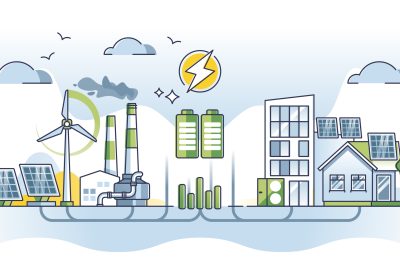Is the sun setting on the electricity export charging ban?
6.1.4, it looks like a footy score gone wrong, but it’s actually an important part of the rules that govern how our electricity system runs. Clause 6.1.4 prohibits electricity distribution network businesses from charging customers who export electricity into the grid. Why are some consumer groups continuing to call for its removal?
What you pay for
Electricity distribution network businesses charge us for using their system, the critical infrastructure that gets electricity from generators to you. However, these “use of system” charges only apply to the electricity we import into our homes to meet our demand. They do not apply to any electricity that we might send back into the grid via our solar panels or batteries.
If you have rooftop solar panels, the amount of electricity you import has likely gone down, reducing the amount you pay not only for the energy you buy from a retailer, but for using the electricity system. This is because when the sun is shining the electricity that is made can be used directly by you and this “self-consumption” minimises the amount of electricity you import and the costs you pay.
But it’s unlikely that you can “self-consume” all the electricity the solar panels produce, particularly at noon on a summer’s day. This means any “excess” generation is exported out on to the distribution network. This export, or reverse power flow, means that our networks are now having to operate in the opposite direction – a task for which they were not designed. We’ve talked before about the impact these reverse power flows can have on quality and reliability of power supplies (read more here). When electricity is exported to the network, that export is clearly using the system.
What 6.1.4 does
Clause 6.1.4 explicitly bars electricity distribution network businesses from charging customers who use the system to export electricity.
The clause was first inserted as part of the National Electricity (Economic Regulation of Distribution Services) Amendment Rules 2007, agreed by the Ministerial Council on Energy. The logic was pretty simple – once connected, large generators don’t pay to use the grid, so neither should customers in the new household solar sector.
Back in 2007, nobody had heard of the phrase “solar saturation”. The idea that significant solar export was imposing costs on the system was still years away. The thinking was that solar would reduce network charges. Clause 6.1.4 was part of a package that also included provisions to ensure that customers with microgeneration captured the benefits of their energy savings in reduced network charges.
Free ride for some, higher charges for others
Let’s think about this a little bit more… The prohibition on charging for using the system to export electricity is a bit like paying to catch the train home from work each afternoon (import), but getting a free ride for the journey to the office (export). In this scenario, all the costs of running the train system have to be levied on those who catch the train home. The situation in our electricity system is like catching the train to work but then walking or cycling home in the evening, avoiding the train fare. You get the benefits of a free trip into work, with the bonus of exercise, but you’ve not paid to use the train system. Those without a realistic cycling or walking option have no choice but to catch the train both ways and end up paying for the costs of everyone to use the system. This fails a basic equity test.
It is noteworthy that in telecommunications, we are used to paying for the download (import) and upload (export) of data. Typically, most of us would download more than we upload (sending an attachment in an email, posting). We pay for what we download and for what we upload, as both count towards the total amount of data we consume. This is because we are using the system for either action. If telecommunication companies had clause 6.1.4, they would only be able to charge for downloads and not uploads.
What are consumer groups saying?
The AEMC floated the idea of removing 6.1.4 as part of its Distribution Market Model review in 2017. This was supported by the St Vincent de Paul Society and SACOSS, which have been jointly on the record multiple times making the case that 6.1.4 is a barrier to efficient pricing for distribution services, resulting in increased cross subsidies.
The other angle referred to is that 6.1.4 undermines a smooth transition to the new transforming energy market. As solar penetration increases to levels that cause network problems, the 6.1.4 prohibition on charging for exports leaves distributors with only two options: 1) build more network or 2) ban exports for new solar connections. Would providing a network congestion price signal be a fairer and more efficient option?
In December 2018, Renew and the Total Environment Centre appeared to have some sympathy for this case: “there may be times and locations in the network where it would be useful to signal that DER export will have a cost impact and failing to signal this through export tariffs means consumers pay for inefficient investment.”
It’s also worth noting that removing 6.1.4 would align with reforms to ensure fairer access and congestion signalling for large generators, such as firm access and dynamic regional pricing.
The challenge remains
Our electricity system is changing rapidly and some of the rules that worked in the past may not work now. Clause 6.1.4 was introduced when distributed energy resources were in their infancy and few foresaw the mass scale integration challenges we are now facing. At present some people, often those least able to afford it, end up paying more than those who can take advantage of new and exciting technologies to reduce their bills.
This is why cost-reflective charging and resolving little clauses like 6.1.4 in our rules is critical to ensuring that everyone can benefit from the exciting transformation of our electricity system.



